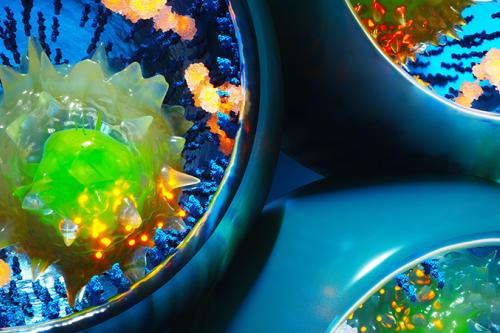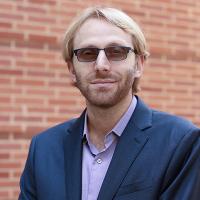
UCLA Samueli to Lead $4 Million Cell Research Project Funded by Chan Zuckerberg Initiative
The Chan Zuckerberg Initiative today announced a $4 million grant to support research led by the UCLA Samueli School of Engineering that will examine cellular behaviors, many of which play a key role in developing immunity to pathogens and disease.
Researchers from the University of Southern California and the California Institute of Technology will collaborate with UCLA Samueli on the three-year project.
The project is part of the initiative’s four multi-year Exploratory Cell Network grants that will bring together regional labs in California (Los Angeles and San Diego), the mid-Atlantic and North Carolina to explore the frontiers of genomics, cell biology and synthetic biology by developing new technologies for measurement and analysis.
“We are excited for the continued support of the Chan Zuckerberg Initiative that will help us develop transformative solutions to real-world challenges,” said Ah-Hyung “Alissa” Park, the Ronald and Valerie Sugar Dean of UCLA Samueli. “Biotechnology is one of the critical frontiers of innovative research and development that will impact all our lives by revealing new understanding about diseases and ways to combat them.”
Led by UCLA Samueli bioengineering professor Dino Di Carlo, the Los Angeles team will engineer, manipulate and analyze cell-to-cell interactions that underlie complex multicellular systems, including immune cells and muscle cells. The project will focus on two technologies — synthetic morphogenesis and lab-on-a-particle “nanovials” — to uncover the secrets behind cells’ communication methods.
Morphogenesis is the biological process by which complex tissues in our body form a particular shape. In normal morphogenesis, the spatial arrangement of cells results in a series of chemical and mechanical interactions that shape the growth and differentiation of specific cell populations in a spatially distinct manner. Exactly how this process occurs is not yet fully understood, which prevents the generation of new tissue outside the body to replace or repair damaged tissue.
To address this challenge, the researchers will use synthetic morphogenesis to probe and engineer changes in the cell-to-cell communication, directing and manipulating the cues to form tissue. One goal, they say, is to ultimately be able to engineer tissue that seamlessly transitions from bone to tendon to muscle, which has never been achieved. The technology can lay the foundation for creating new replacement tissue with high-level function as therapeutics.
Lab-on-a-particle technology leverages microfabricated nanovials, test tube–like hydrogel particles that are sized for single cells and are a thousand times smaller than the width of a human hair. Using these nanovials, the researchers can mimic cell-to-cell interactions in a synthetic environment and probe the secreted signals released by cells. Because the nanovials are so small, millions of them can be loaded with individual cells all at once, which allows each cell to be analyzed and sorted using standard laboratory infrastructure.
“This project focuses on developing accessible tools that can dramatically accelerate discoveries in the ubiquitous biology of cells interacting with other cells,” said Di Carlo, UCLA’s Armond and Elena Hairapetian Chair in Engineering and Medicine and director of the Di Carlo Lab.
The team will coat the nanovials with proteins that mimic the surfaces of other cells, and the platform will allow measurement of the diversity of responses when cells interact with partner cells. Millions of hydrogel nanovials can each act as an individual reaction vessel to probe cell-to-cell interactions, allowing high-scale cell screening. The technology is also compatible with industry-standard lab equipment, making it easily accessible to the larger scientific community.
“Collaborative projects like this lay the foundation for our trainees — the next generation of scientific leaders — to develop the habit of working in multidisciplinary teams, which is critical for future scientific advancements,” said Di Carlo, who also holds a faculty appointment in the UCLA Samueli Department of Mechanical and Aerospace Engineering and is a member of the California NanoSystems Institute (CNSI) at UCLA and the UCLA Health Jonsson Comprehensive Cancer Center. “We aim for this collaboration to be the start of a long-term partnership across institutions to advance biotechnology in Los Angeles.”
Findings from the project could help unlock a variety of cell and gene therapies to treat diseases such as cancer, muscular dystrophy and autoimmune conditions. Di Carlo said the team’s work may cross over with the California Institute for Immunology and Immunotherapy at UCLA, which will be housed at the newly announced UCLA Research Park on the site of the former Westside Pavilion shopping mall in West Los Angeles.
The multidisciplinary UCLA team also includes Dr. Thomas Rando, director of the Eli and Edythe Broad Center of Regenerative Medicine and Stem Cell Research at UCLA; the Broad Center’s founding director emeritus, Dr. Owen Witte; Kathrin Plath, a professor of biological chemistry; Jessica Li, a professor of statistics and a UCLA Fielding School of Public Health professor of biostatistics; and Lili Yang, a professor of microbiology, immunology and molecular genetics.
The Chan Zuckerberg Initiative-funded program builds on collaborative research from the Broad Stem Cell Research Center and CNSI at UCLA.
